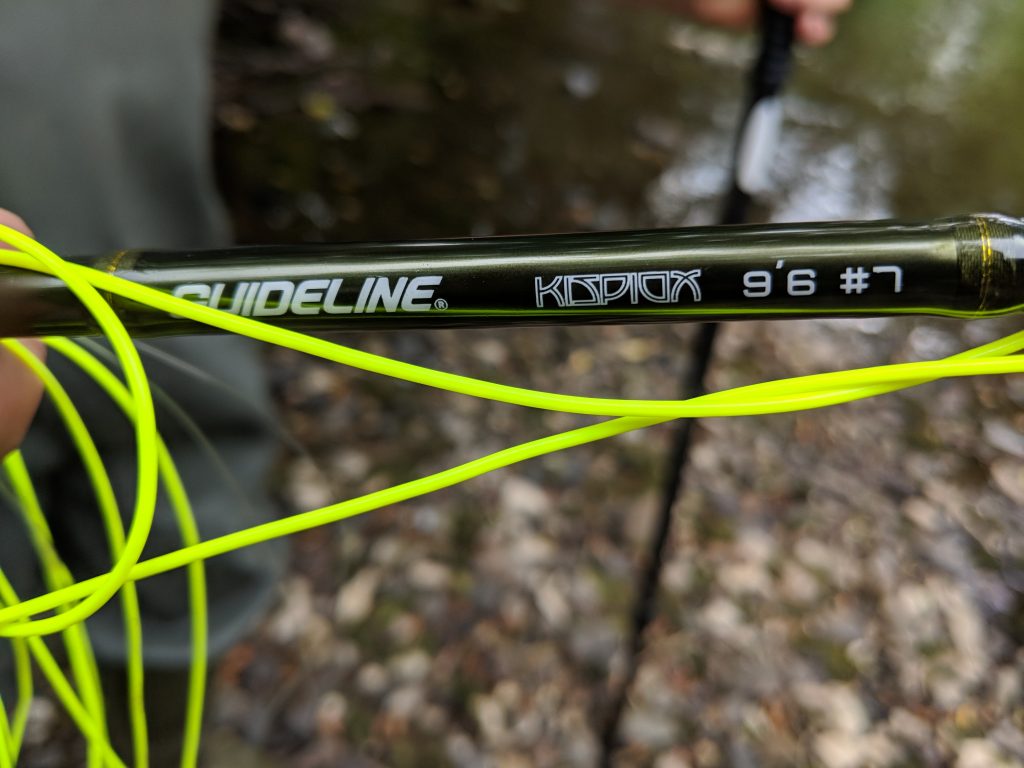Free Video River Fly Fishing Course
20+ instructional videos, shot in 4k. Free to all new and existing newsletter subscribers – Click Here!

The fly rod is likely to be an angler’s biggest investment in terms of tackle. A fly rod is a tool which needs to do a specific job. Which fly rod you choose will come down to a number of factors. Feel, cost and looks will all factor in your decision.
As a fly fishing coach I have lots of fly rods surrounding me here in my office. In the wicker basket next to me there is one that cost around £25 and there is one that cost around £400. I enjoy casting with both and would happily take the cheaper one out for a day’s fishing. I have tried expensive rods that I have thought were ineffective yet other experienced anglers thought they were excellent.
As you can see, fly rods can be very subjective. The most important thing is that you end up with have a rod which you enjoy using and that does well the job you require it to do.
Rod length
The most popular length of fly rod is between nine and ten feet and this is the length I would recommend for buying your first rod. You should consider a shorter rod if the environment you are fishing in requires it such as overgrown streams where a shorter rod will allow you to cast under the trees.
Rod action
The action of the rod describes how the rod flexes whilst you are casting. Unfortunately, there is a variety of language and opinion when it comes to rod action.
Tip action, fast action, tip flex: Has a stiff feel in the hand and the tip of the rod will flex when casting. This type of rod is generally able to produce higher line speeds when casting so can be useful when longer distances are required. These rods can be slightly more difficult to feel the ‘load’ of the rod when casting which may make them harder for beginners to cast with.
Medium action, mid flex: Medium action rods have a slightly looser feel in the hand and will flex from around the middle of the rod through to the tip when casting. This type of rod will not produce as quick a line speed as a fast action rod but it is easier to feel the ‘load’ of the rod and they are definitely more forgiving in terms of timing. A good all-rounder and probably a sound choice for a beginner.
Through action, slow action, soft action, full flex: These rods have a very loose, almost wobbly feel when casting. They flex throughout their length when casting and will produce only a slow line speed in comparison. They do have their place though, for fishing small streams where small flies are only cast a short distance. They can be enjoyable to use, especially when employing the roll cast. However, beginners may struggle with this type of action.
Choosing The Rod Weight
Fly fishing lines come in lots of different weights. This is known as the #AFTM rating (Association Of Fishing Tackle Manufacturers) Each different line weight has a number, the higher the number the heavier the line is. Your rod also has a weight, this is indicated by a number or numbers written on the side of the rod. Your line weight needs to match your rod weight in order for the tackle to cast efficiently.
For instance if your rod says AFTM #4 you need to use a four weight line.
or
AFTM #6/7 you need to use either a 6 or a 7 weight line.

The things you need to consider when choosing a line & rod weight are:
The sizes of flies you will be casting
The amount of wind you are casting in
The size of fish you are targeting
The distance you need to cast
The bigger all or any of those are, the bigger line and rod weight needs to be.
Generally speaking rods of 5 weight and below will be more suited to rivers and small still water and 6-8 weight are more suited to reservoirs trout fishing, 8 weight and above are more suited to other species (see below)
Here’s a few examples of my set ups below to give you a flavour of how it works:
Small stream – 7 foot #3 weight rod
Normal river set up – 9 foot #4 weight rod
Reservoir trout – #10 foot #8 weight rod
Saltwater fly fishing wet up – 9 foot #9 weight rod
Fly fishing for Pike set up – 9 foot #10 weight rod
Salmon set up – 14 foot #10/11 weight set up`
If you have no idea where you will be fishing, go for a 9 foot #6 weight rod with a mid – tip action. This will serve as the nearest thing there is to an ‘all rounder’ and will be suitable for learning to cast with.
Free Video River Fly Fishing Course
20+ instructional videos, shot in 4k. Free to all new and existing newsletter subscribers – Click Here!



